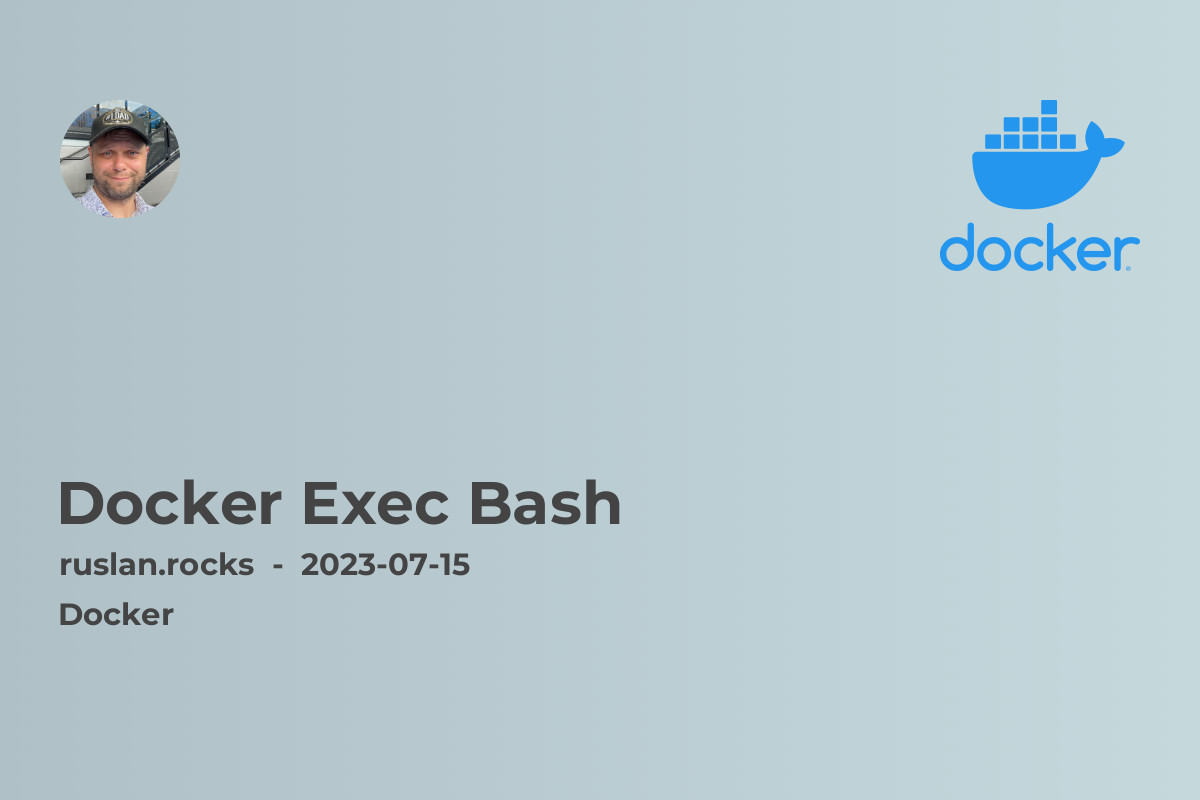
When working with Docker, one of the most common tasks is executing commands inside a running container. The Docker Exec Bash command allows you to gain access to a interactive shell within a container, providing a powerful tool for troubleshooting, debugging, and performing various administrative tasks. In this article, we will explore the fundamentals of Docker Exec Bash and how it can enhance your containerized workflows.
Understanding Docker Exec Bash
Docker Exec Bash is a command-line tool that enables you to execute a Bash shell inside a running Docker container. This command is particularly useful when you need to access the container's file system, run scripts, or troubleshoot issues. By using Docker Exec Bash, you gain interactive access to the container's processes, allowing you to execute commands just as if you were logged into the container itself.
How to Use Docker Exec Bash
Using Docker Exec Bash is straightforward. To execute a Bash shell in a running Docker container, you can use the following command:
docker exec -it <container_id> /bin/bash
Let's break down the command:
-
docker exectells Docker that you want to execute a command in a running container. -
-itattaches an interactive tty to the container, providing you with an interactive terminal session. -
<container_id>specifies the container in which you want to execute the command. -
/bin/bashis the command (in this case, a Bash shell) that you want to execute inside the container.
Once you run this command, you will be dropped into a Bash shell within the specified container, allowing you to interact with the container as if it were a local environment.
Understanding Container IDs
Container IDs are unique identifiers assigned to each running Docker container. To find the ID of a specific container, you can use the docker ps command, which lists all the running containers along with their IDs. Alternatively, you can use the container name instead of the container ID, but it's always a good practice to use the ID to ensure accuracy.
Use Cases for Docker Exec Bash
Now that you know how to use Docker Exec Bash, let's explore some common use cases where it can come in handy:
-
Debugging and Troubleshooting: When something goes wrong inside a Docker container, being able to access the container's file system and execute commands within it can be invaluable. Docker Exec Bash allows you to quickly debug issues, examine logs, and troubleshoot problems without needing to rebuild or restart the container.
-
Software Installation and Configuration: Docker Exec Bash can be used to install and configure software inside a running container. This is especially useful when you need to make changes or install additional packages on the fly without rebuilding the entire container image.
-
Data Migration and Management: With Docker Exec Bash, you can easily migrate and manage data within a container. By accessing the container's file system, you can manipulate files, transfer data, and perform backup and restore operations.
-
Container Monitoring and Performance Analysis: When monitoring the performance of a Docker container, Docker Exec Bash allows you to execute various diagnostic commands for real-time performance analysis. This helps you identify and address resource bottlenecks, memory leaks, and other performance-related issues.
-
Container Security Auditing: Docker Exec Bash is a valuable tool for security auditing and vulnerability scanning. By accessing the container's file system and processes, you can inspect the container's configuration, check for weak permissions, analyze running processes, and ensure compliance with security best practices.
Related Articles
To further enhance your knowledge of Docker and containerization, here are some related articles that you might find interesting:
-
What Is Docker: Discover the core concepts and benefits of Docker, the popular containerization platform that revolutionized application deployment.
-
Introduction to Containerization: Dive deeper into the concept of containerization and explore its advantages in modern software development.
-
Docker vs Kubernetes: Which Container Orchestration Tool Should You Choose?: Compare and contrast Docker and Kubernetes, two widely-used container orchestration platforms, to determine which one suits your needs.
-
Managing Microservices with Docker Swarm and Kubernetes: Learn how to effectively manage and orchestrate microservices using Docker Swarm and Kubernetes, two powerful container orchestration tools.
-
What Is Docker Hub: Discover Docker Hub, the world's largest repository of Docker container images, and learn how to leverage it in your containerization workflows.
By exploring these articles, you can gain a deeper understanding of containerization and expand your knowledge of Docker and its ecosystem.
In conclusion, Docker Exec Bash is a powerful tool that allows you to access and interact with running containers. Whether you need to troubleshoot issues, perform software installation, or manage data within a container, Docker Exec Bash provides the flexibility and control you need. By familiarizing yourself with this command and leveraging it in your day-to-day operations, you can unlock the full potential of Docker and streamline your containerized workflows. So, why not give Docker Exec Bash a try and experience the benefits for yourself?
Note: The contents of this article are for educational purposes only. Always exercise caution and follow best practices when working with Docker and executing commands within containers.
